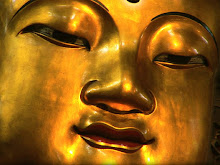SPIRITUAL OR IMMORTAL EMBRYO. In Chinese culture the Spiritual Embryo is the core energy in a human being, the original energy of the body’s conception. It is this energy, when led through various practices, to the center of the brain (the pineal gland, or nihuan point in the Chinese medical system) that results in full-realization enlightenment. Through various breathing techniques, one can return to the original embryonic breathing pattern, which is the union of yin and yang and the basis of the realization of the Tao. The cultivation of the Spiritual Embryo is the central metaphor for the evolution of mind and body in Chinese culture.
This idea of the Immortal Embryo (sheng tai) goes very far back in Taoist internal alchemy practices. The basic idea is that through continually practicing internal alchemy, one develops an immortal, spiritual embryo. Then, after further practice and refinement, this spiritual embryo actually emerges from the body of the practitioner, out through the crown or Heavenly Gate point at the top of the head. We can see illustrations from ancient China of the practitioner sitting in meditation with a small fetus floating above his head. The Immortal Embryo is also described as a form of pure yang spirit. Upon death thispure yang energy will live on outside the body.
In Taoism it is believed that not all people achieve reincarnation. For the vast majority of people who do no spiritual practice, upon their death their hun and po souls separate and they are basically “recycled back into the Tao.” But those who do cultivation have an opportunity to come back into the world again for further teaching or to help others along the Way.
Here is a description of the nine stages involved with creating the Immortal Embryo.
(1) the living ch’i circulates freely and unimpeded throughout the body; (2) the essence, the semen (ching), collects in the lower cinnabar field; (3) the sacred embryo begins to assume the form of a human embryo; (4) the two souls of the sacred embryo come into being; (5) the embryo is fully formed and has various supernatural powers; (6) inner and outer yin and yang reach their highest intensity and the embryo merges with the body of the adept; (7) the five internal organs are transformed by the power of ch’i into those of an immortal; (8) an umbilical cord develops, through which the breath is channeled during a practice known as embryonic breathing; (9) form and Tao combine and clouds form below the feet of the practitioner, on which he ascends toward Heaven thereby completing the metamorphosis.
- The Shambhala Dictionary of Taoism
Now whether this is an actual physical experience or if it is more of an inner spiritual or energetic one, the spiritual attainment is the same. There will be physical and energetic experiences connected with this. Just as with a mother carrying a child, much care must be taken to nourish and strengthen both the body and the spirit of the practitioner. It is only in this way that a successful birth of the Immortal Embryo can happen.
